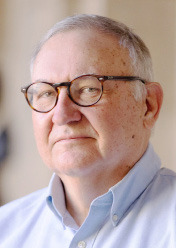Anymore, having high-speed internet at your home, farm or business has become as important as having electricity.
You run a business and have a website? You need high-speed internet.
You use precision ag? You need high-speed internet.
You wanna be examined by a doctor via video over the internet, something called “tele-health?” You need high-speed internet.
You like playing video games or downloading movies? High-speed internet makes that all better.
And just like electricity, it’s been hard to extend broadband to every corner of the nation, especially the most remote farms and ranches.
It is not cheap to string fiber optic lines to areas with few potential customers. That’s why both the federal and state governments have decided to offer financial incentives for companies to serve unserved areas.
Two years ago, there was much excitement when Congress passed President Joe Biden’s Broadband Equity, Access and Deployment Act (BEAD). It provided a whopping $42.45 billion nationwide, including $304 million in Nebraska, to help companies to extend highspeed service.
“Internet for All” was how BEAD was portrayed. It was part of Biden’s push to invest in needed infrastructure improvements, such as better roads and bridges, and better internet.
“... High-speed Internet is a necessity in today’s society,” said a presidential aid, likening it to President Franklin Roosevelt’s “Rural Electrification Act” that brought electricity to nearly every home in America But recent changes in the BEAD program have some advocates for broadband wondering if currently unserved and underserved locations in Nebraska will have to settle for less-than-ideal internet.
First off, the criteria for determining which areas deserved BEAD grants changed, which rendered hundreds of locations across Nebraska now ineligible for federal funds.
Initially, state and county officials identified nearly 30,000 spots across the state that either were unserved by high-speed internet, or had slow internet, and deserved an upgrade. Now, only about half of those locations remain eligible.
Another big change was the kind of broadband the program would fund.
Initially, BEAD had a major preference for internet carried by fiber-optic cable, which is viewed as the Cadillac of delivery systems, and one that can be upgraded as technology advances.
But the recent changes now mean that broadband carried by satellites – like Elon Musk’s StarLink system – and broadcast via wireless means are good enough.
That led some advocates of broadband to say that rural folks will have to settle for second-rate internet service, because wireless and satellite systems can be disrupted by weather or other electronic signals, and is typically slower than internet delivered via cable. It also led more than half of the counties in the state sending letters objecting to the changes, and came after dozens of state legislators – including three from Nebraska (Tom Brandt of Plymouth, Wendy DeBoer of Omaha and Jana Hughes of Seward) – also argued in letters against the changes.
The changes were done in the name of cutting expenses – it’s much cheaper to send an electronic signal a couple of miles than to bury that stretch in fiber-optic cable. So much cheaper that some estimate that Nebraska will send back about half of its $304 million in BEAD funds unspent.
I hear often from people who’ve travelled overseas about how good the internet and cell service is there, and why the U.S. can’t have comparable service.
That’s a good question. And if rural areas are to remain viable as places to do business or enjoy the amenities you find in the big city, good internet service is needed.
Right now, at the farm our family owns, you can get broadband by aiming a satellite dish at the top of a grain bin located on a high hill, where a repeater passes on a signal sent from a town 10 miles away.
That seems like a baling-wire approach, and one that can’t be as reliable as hooking up to fiber, like you can do in most communities across the state.
We can do better. Let’s hope that our federal delegation, and state officials, will figure out how.
Paul Hammel has covered state government and the state for decades. Prior to his retirement, he was senior contributor with the Nebraska Examiner.

.jpg)








